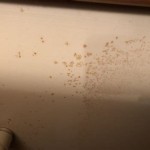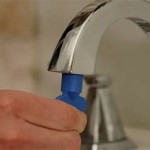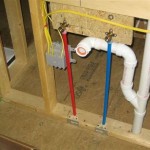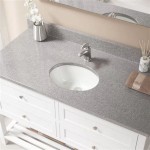```html
Why Are There Tiny Ants In My Bathroom?
Discovering tiny ants in a bathroom is a common household problem. These miniature intruders, often sugar ants or grease ants, are drawn to specific conditions that bathrooms frequently provide. Understanding the reasons behind their presence will help in effectively addressing the infestation and preventing future occurrences.
Moisture: An Irresistible Attractant
Bathrooms, by their very nature, are prone to higher levels of moisture compared to other rooms in a house. Leaky faucets, showerheads, and toilets can create a consistently damp environment, which is highly attractive to ants. Standing water, even in small quantities, provides a crucial water source for these insects, enabling them to thrive and reproduce. Condensation accumulating on pipes and walls also contributes to this moisture-rich habitat.
Ants require water to survive, just like any other living organism. Deprived of a consistent water supply, they will struggle to maintain their bodily functions and sustain their colony. Therefore, even a minor leak can transform a bathroom into an oasis for these tiny creatures. The presence of ants in a bathroom often points to an underlying plumbing issue or inadequate ventilation. Addressing these issues is paramount not only for eliminating the ant infestation but also for preventing potential water damage to the building structure.
Furthermore, the humidity levels in a bathroom after a shower or bath create an ideal environment for ants. The warm, damp air provides a comfortable atmosphere for them to forage and explore. If the bathroom lacks proper ventilation, such as an exhaust fan or an open window, the humidity can linger for extended periods, further exacerbating the problem. This prolonged exposure to moisture increases the likelihood of ants establishing a permanent presence.
Identifying and repairing any leaks is the first step in combating the ant infestation. Even seemingly insignificant drips can provide sufficient water for an ant colony. Regular inspection of plumbing fixtures and timely repairs are essential. Improving ventilation is equally important. Using an exhaust fan during and after showers, and ensuring proper airflow throughout the bathroom, can significantly reduce humidity levels and deter ants. Drying wet surfaces after use, such as shower walls and the floor, further minimizes the available water sources.
Additionally, porous materials commonly found in bathrooms, such as grout and caulk, can absorb and retain moisture. Cracks and gaps in these materials provide ants with hidden access points to the damp environment behind walls and under floors. Regularly inspecting and resealing these areas will help prevent moisture buildup and restrict ant entry.
Food Sources: A Tempting Buffet
While bathrooms are not typically associated with food, they can still offer sufficient food sources for ants. Sugary residues from spilled toiletries, hair products, or even toothpaste can attract these insects. Crumbs and other organic matter that accumulate in drains or around toilets also provide a potential food source. Even minute traces of these substances can be enough to sustain a small ant colony.
Ants are scavengers and are constantly searching for food to bring back to their colony. They are particularly drawn to sugary substances, which provide them with a readily available source of energy. Therefore, any spills or drips of sweet-smelling products will quickly attract their attention. Similarly, grease ants are attracted to oily residues that may accumulate around sinks and drains.
Maintaining a clean bathroom is crucial for eliminating potential food sources. Regularly wiping down surfaces, especially around sinks and toilets, will remove any sugary or oily residues. Sweeping or vacuuming the floor will eliminate any crumbs or other organic matter. It is also important to properly dispose of any used toiletries, such as cotton swabs or tissues, as these can sometimes contain traces of organic matter that attract ants.
Cleaning drains regularly is also essential. Hair and other debris can accumulate in drains, creating a breeding ground for bacteria and other microorganisms that ants may feed on. Using a drain cleaner or a simple mixture of baking soda and vinegar can help to keep drains clear and prevent the buildup of organic matter.
Proper storage of toiletries is also important. Keeping bottles and containers tightly sealed will prevent spills and leaks. Using airtight containers for storing items such as cotton balls and cotton swabs will also help to prevent ants from accessing these potential food sources. Furthermore, it is advisable to avoid eating or drinking in the bathroom to minimize the risk of spills and crumbs.
Entry Points: Uninvited Guests
Bathrooms often have numerous potential entry points for ants. Cracks and gaps in walls, around pipes, and under doors provide easy access for these tiny insects. Ants can also enter through windows, vents, and even through shared plumbing lines with neighboring units. These entry points allow ants to access the bathroom from outside or from other areas of the house.
Ants are adept at finding their way into buildings through even the smallest openings. Their small size allows them to squeeze through cracks and crevices that are invisible to the naked eye. They often follow trails of pheromones left by other ants, leading them directly to potential food and water sources. These pheromone trails can persist for long periods, even after the initial infestation has been eliminated, making it important to thoroughly clean and seal potential entry points.
Sealing any cracks and gaps in the bathroom is crucial for preventing ant entry. Using caulk or sealant to fill in cracks around pipes, windows, and doors will create a barrier that ants cannot penetrate. Inspecting and repairing any damage to walls or floors will also help to eliminate potential entry points. It is also important to ensure that windows and doors fit tightly and that weather stripping is in good condition.
Mesh screens can be installed over windows and vents to prevent ants from entering through these openings. These screens should be regularly inspected for damage and replaced as needed. It is also important to ensure that any shared plumbing lines with neighboring units are properly sealed to prevent ants from traveling between units.
Furthermore, ants can sometimes enter a bathroom by following pipes from other areas of the house. Sealing the areas where pipes enter and exit the bathroom can help to prevent them from using these pathways. Using expanding foam or caulk to fill in any gaps around pipes will create a physical barrier that ants cannot cross.
Identifying the specific entry points used by ants can be challenging, but it is essential for effectively controlling the infestation. Tracing the ants back to their nest can help to pinpoint the source of the problem. Once the entry points have been identified, they can be sealed or treated with insecticide to prevent further entry.
```
How To Stop Ants From Invading Your Bathroom Identification And Prevention Tips Tabor Pest Control

Boise Idaho Pest Control Pestcom

Blog What Are Those Teeny Weenie Ants Delta Optimist

Why Tiny Ants Have Invaded Your House And What To Do About It

How To Get Rid Of Tiny Ants In Your Bathroom

How To Get Rid Of Sugar Ants John Moore Services

Why Do I Have Hundreds Of Tiny Ants All Over My Kitchen

Why Do I Have Ants In My Bathroom

How To Get Rid Of Little Black Ants In Your Bathroom Housekeeping Wonderhowto

Niagara Pest Control Why Are There Carpenter Ants In The Bathroom
Related Posts







